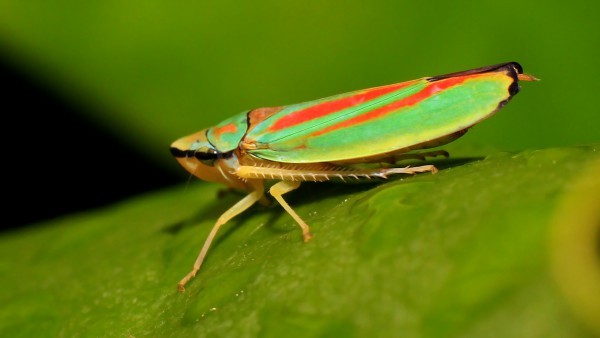Rhododendron buds turning black can be a sign of various issues, and it’s important to identify the specific cause to address the problem effectively. Here are some common reasons why rhododendron buds may turn black:
- Fungal Diseases: Fungal infections are a common cause of blackened rhododendron buds. Botrytis blight (gray mold) is a well-known culprit. It thrives in wet and humid conditions, especially during periods of extended rain or high humidity. The fungus infects the buds, causing them to turn black, mushy, and rot. Proper air circulation and reducing moisture around the plant can help prevent fungal diseases.
- Cold Injury: Rhododendron buds can be sensitive to cold temperatures. Late spring frosts or sudden drops in temperature can damage buds, causing them to turn black and fail to open properly. Consider using protective covers or mulch to protect your plants during frosty periods.
- Insect Damage: Insects, such as budworms, weevils, or aphids, can feed on rhododendron buds. Their feeding can damage the buds, leading to discoloration and deformities, including turning black.
- Nutrient Imbalance: Rhododendrons require specific nutrients for healthy growth. A deficiency in essential nutrients, particularly iron, can lead to unhealthy growth and darkening of the buds. Soil testing can help identify nutrient imbalances and guide fertilization.
- Overhead Watering: Watering rhododendrons from overhead, especially in the evening, can leave moisture on the buds for an extended period. This excess moisture can create conditions conducive to fungal diseases and lead to blackened buds. Instead, water at the base of the plant and in the morning to allow foliage to dry during the day.
- Improper Pruning: Pruning at the wrong time of year or too aggressively can damage buds and potentially lead to blackening. Prune your rhododendron after it has finished flowering and before new growth begins.
- Environmental Stress: Environmental stressors, such as drought or excessive sun exposure, can weaken the plant, making it more susceptible to bud problems.
Contents
To address the issue of blackened rhododendron buds, consider the following steps:
- Prune Affected Buds: Carefully remove any blackened buds or affected growth to prevent the spread of disease and encourage healthy new growth.
- Improve Air Circulation: Ensure that the plant has good air circulation by proper spacing and pruning to reduce humidity around the plant.
- Water Management: Water your rhododendron at the base and ensure that it receives adequate but not excessive moisture.
- Fungicide Treatment: If you suspect a fungal disease, consider using a fungicide as a preventive measure, especially if your area is prone to wet and humid conditions.
- Soil Testing and Nutrient Management: Conduct a soil test to identify nutrient deficiencies and address them with appropriate fertilization.
- Pest Control: Address any insect infestations through appropriate pest control measures.
Monitoring the health of your rhododendron plants and taking preventive measures is essential to maintain their vitality and prevent blackening of the buds.
You find black buds on your rhododendron? Then the plant is probably suffering from bud browning or bud dieback: This is when the flower buds of rhododendrons brown over the course of winter and spring until they are black in color and no longer open and die. Dark, about 1 to 2 mm long hair-like fungal structures (coremium) are found on the bud surface.
Who is to blame: fungus or cicada?

Bud dieback is caused by a fungus (Pycnostysanus azaleae). This is usually transmitted when the rhododendron cicada (Graphocephala coccinea) lays its eggs and the wounds that occur with it.
The adults of the rhododendron cicada appear from about July to September. They are distinctly shiny green in color (about 1 cm long) and have some conspicuous orange stripes on their backs. They are quite active on sunny days, preferring to colonize the tips of shoots. The eggs of the cicada overwinter in the buds, in April the yellowish, flightless and very agile larvae hatch. The larvae as well as later the adults suck on the undersides of the leaves (consequence: partly bright speckles on the upper side of the leaves), also the moulting remains of the animals can be found here. The rhododendron cicada goes through only one generation a year.
The occurrence of the fungus is limited to the bud, thus it does not spread to the shoot and does not grow into it. Rhododendron cicada occurs mostly on large-flowered hybrids. Hairy as well as small-flowered species are less affected or not affected at all. Plants in unfavorable locations or with poor growing conditions are more easily infested.
Prevention and control
- Around July, you can hang yellow sheets between the rhododendron branches to trap some of the adults that are able to fly. The yellow color magically attracts the insects and they stick to the sticky coating (available at all garden centers).
- Also, carefully remove any infested buds (dispose of them in the residual trash, not the compost) by hand. To do this, simply break out the buds.
- Also see if you can optimize the site conditions (avoid sunny, drought-prone places). If necessary, transplant your rhododendron to a better place. Very important is the acid soil, low in lime and rich in humus. If the plants are well cared for, diseases or pest infestations are very rare.










